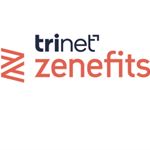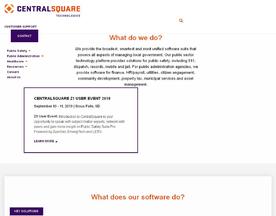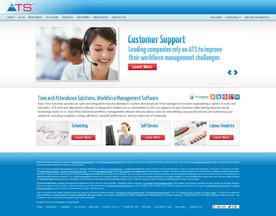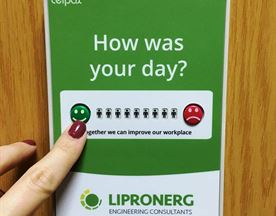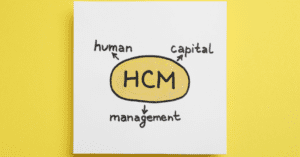How to maximize human capitol for business success with strategic HR ? Boost business success by aligning HR strategies with corporate goals, investing in employee development, and fostering a strong workplace culture.
Strategic HR is an approach to human resources management that aligns HR practices with business goals and objectives. The goal of strategic HR is to create a high-performance work culture that drives organizational success. Strategic HR involves a comprehensive, integrated approach to managing people, which includes talent acquisition and management, performance management, training and development, compensation and rewards, and strategic HR metrics and analytics.

Foundations of Strategic HR are built on the idea that employees are the most valuable asset of an organization. Strategic HR recognizes that the success of an organization depends on the quality of its workforce. Therefore, it is essential to develop a strategic HR plan that aligns with the organization’s goals and objectives. A strategic HR plan involves identifying the organization’s human resource needs, developing a plan to meet those needs, and implementing the plan. The plan should include strategies for attracting and retaining top talent, developing employee skills and competencies, and creating a high-performance work culture.
Key Takeaways
- Strategic HR is an approach to human resources management that aligns HR practices with business goals and objectives.
- Foundations of Strategic HR are built on the idea that employees are the most valuable asset of an organization.
- A strategic HR plan involves identifying the organization’s human resource needs, developing a plan to meet those needs, and implementing the plan.
Foundations of Strategic HR
Understanding Strategic Human Resource Management
Strategic human resource management (SHRM) is the process of aligning an organization’s human resource goals with its overall business strategy. This approach to HR management involves analyzing the organization’s goals and objectives, identifying the skills and competencies required to achieve those goals, and developing HR policies and practices that support the organization’s strategy.
One of the key benefits of SHRM is that it helps organizations to attract, develop, and retain the talent they need to achieve their strategic objectives. By aligning HR goals with the organization’s overall strategy, HR managers can ensure that they are hiring and training employees with the right skills and competencies to support the organization’s goals.
To learn more about SHRM and its benefits, check out this source from the Society for Human Resource Management.
Aligning HR Goals with Organizational Goals
In order to align HR goals with organizational goals, HR managers must first understand the organization’s overall strategy and objectives. This involves analyzing the organization’s mission, vision, and values, as well as its current business strategy.
Once the organization’s strategy and objectives have been identified, HR managers can begin to develop HR goals and policies that support those objectives. For example, if the organization’s strategy is to expand into new markets, HR managers may need to focus on recruiting and training employees with experience in those markets.
By aligning HR goals with organizational goals, HR managers can ensure that they are supporting the organization’s overall strategy and contributing to its success.
To learn more about aligning HR goals with organizational goals, check out this source from the Society for Human Resource Management.
Strategic HR Planning
Strategic HR planning is the process of aligning an organization’s human resources with its overall business strategy. It involves identifying the workforce needs of an organization and developing strategies to meet those needs in the future.
Workforce Planning and Forecasting
Workforce planning involves analyzing an organization’s current workforce and predicting future needs. This involves identifying the skills and competencies that will be required in the future and developing strategies to acquire or develop those skills. Workforce forecasting can be done by analyzing historical data, industry trends, and other relevant factors to predict future workforce needs.
One of the key benefits of workforce planning is that it helps organizations to avoid talent shortages and overstaffing. By identifying future workforce needs, organizations can develop strategies to recruit and retain the right talent to meet those needs.
Succession Planning and Talent Pool Development
Succession planning is the process of identifying and developing future leaders within an organization. It involves identifying key positions within the organization and developing strategies to ensure that there are qualified individuals ready to fill those positions when they become vacant. Succession planning helps organizations to ensure that they have a strong leadership pipeline and that they are prepared for future changes in leadership.
Talent pool development involves identifying and developing employees with high potential for future leadership positions. This involves providing training and development opportunities to help employees build the skills and competencies required for future leadership positions.
One of the key benefits of succession planning and talent pool development is that it helps organizations to retain their top talent. By providing employees with opportunities for growth and development, organizations can increase employee engagement and reduce turnover.
Overall, strategic HR planning is essential for organizations that want to ensure that they have the right talent in place to achieve their business goals. By developing strategies for workforce planning, succession planning, and talent pool development, organizations can ensure that they have the right people in the right positions to drive business success.
For more information on strategic HR planning, check out this resource from the Society for Human Resource Management.
Talent Acquisition and Management
Talent acquisition and management is an essential part of strategic HR. It is the process of identifying, attracting, and retaining top talent to achieve organizational goals. Effective talent acquisition and management can help organizations gain a competitive advantage and improve their bottom line.
Effective Recruitment and Selection Strategies
Recruitment and selection are critical components of talent acquisition and management. Organizations need to implement effective recruitment and selection strategies to attract and retain top talent. This includes developing job descriptions, identifying the right sources for recruitment, and conducting effective interviews.
One effective strategy for recruitment is to leverage social media platforms. LinkedIn, for example, is a powerful tool for recruiters to find and connect with potential candidates. Organizations can also use job boards, employee referrals, and career fairs to attract top talent.
Selection strategies should be tailored to the specific needs of the organization. This includes using assessments, reference checks, and background checks to ensure that the candidate is the right fit for the job and the organization.
Employee Retention and Engagement
Employee retention and engagement are critical to the success of any organization. Organizations need to develop strategies to retain top talent and keep them engaged. This includes providing competitive salaries and benefits, opportunities for career development, and a positive work environment.
One effective strategy for employee retention is to provide regular feedback and recognition. This can help employees feel valued and motivated to continue contributing to the organization. Organizations can also provide opportunities for employees to take on new challenges and responsibilities, which can help keep them engaged and motivated.
To learn more about talent acquisition and management, check out this resource from the Society for Human Resource Management (SHRM).
Performance Management

Performance management is a crucial aspect of strategic HR that involves the continuous process of identifying, evaluating, and developing the performance of employees to meet organizational goals. It involves setting clear expectations, providing feedback, and coaching employees to improve their performance. Effective performance management can lead to increased productivity, job satisfaction, and employee retention.
Designing Performance Management Systems
Designing a performance management system involves identifying the key performance indicators (KPIs) that are relevant to the organization’s goals and objectives. The system should be designed to align employee goals with organizational goals and provide a clear understanding of what is expected of each employee. It should also provide a fair and objective way of measuring employee performance.
To design an effective performance management system, it is essential to involve employees in the process. Employees should have a say in setting their goals and be given regular feedback on their performance. The system should also be flexible enough to adapt to changing business needs.
Assessing and Enhancing Employee Productivity
Assessing employee productivity is an essential part of performance management. It involves measuring employee performance against the KPIs set for their role. Regular performance reviews can help identify areas where employees need additional support or training to improve their performance.
To enhance employee productivity, organizations can provide training and development opportunities that align with employee goals. Providing employees with the necessary tools and resources to perform their job can also help increase productivity. Regular feedback and recognition can also motivate employees to perform at their best.
According to a study by the Society for Human Resource Management (SHRM), organizations that have effective performance management systems in place are more likely to achieve their business goals and have higher employee engagement and retention rates.
In conclusion, performance management is an essential aspect of strategic HR that can help organizations achieve their goals and objectives. By designing effective performance management systems and assessing and enhancing employee productivity, organizations can improve employee performance, job satisfaction, and retention rates.
Training and Development

Training and development are essential aspects of strategic HR that help organizations to enhance their employees’ skills and knowledge, improve their productivity, and achieve their business goals. This section will discuss two critical areas of training and development: identifying skills and training needs and leadership development and career pathing.
Identifying Skills and Training Needs
Identifying skills and training needs is the first step in developing an effective training program. It involves assessing the current skills and knowledge of employees and identifying the gaps that need to be filled. This can be done through various methods, such as performance evaluations, skills assessments, and surveys.
Once the skill gaps have been identified, organizations can design training programs that address these gaps. This can include on-the-job training, classroom training, e-learning, and coaching. It is essential to ensure that the training programs are relevant, engaging, and effective in addressing the identified skill gaps.
Organizations can also use technology to enhance their training programs. For example, they can use virtual reality simulations to provide employees with hands-on training in a safe environment. This can be particularly useful for training employees in high-risk jobs or for providing training that is difficult to replicate in real-life situations.
Leadership Development and Career Pathing
Leadership development and career pathing are critical aspects of professional growth and development. Organizations need to provide their employees with opportunities to develop their leadership skills and advance their careers within the organization.
Leadership development can involve various activities, such as mentoring, coaching, and leadership training programs. These activities help employees to develop their leadership skills, such as communication, decision-making, and problem-solving.
Career pathing involves providing employees with a clear understanding of the skills and experience they need to advance their careers within the organization. This can involve creating career paths and providing employees with opportunities to develop the skills and experience they need to progress along these paths.
Organizations can also use technology to enhance their leadership development and career pathing programs. For example, they can use online learning platforms to provide employees with access to training materials and resources. They can also use gamification to make training and development more engaging and interactive.
In conclusion, training and development are critical aspects of strategic HR that help organizations to enhance their employees’ skills and knowledge, improve their productivity, and achieve their business goals. By identifying skills and training needs and providing leadership development and career pathing opportunities, organizations can ensure that their employees have the skills and experience they need to succeed in their roles and advance their careers.
Here is a link to the Society for Human Resource Management’s resources on organizational and employee development.
Compensation and Rewards

In today’s highly competitive job market, it is essential for companies to offer competitive compensation and rewards packages in order to attract and retain top talent. This section will explore two key aspects of strategic HR related to compensation and rewards: creating competitive compensation packages and developing reward systems aligned with performance.
Creating Competitive Compensation Packages
One of the most important aspects of creating a competitive compensation package is understanding the market. Companies must conduct regular research to determine the prevailing compensation rates for similar positions in their industry and location. This information can be obtained from a variety of sources, including industry reports, salary surveys, and online databases.
Once the market data has been collected, companies can use it to develop a compensation strategy that is both competitive and aligned with their overall business goals. This may involve offering a mix of base pay, bonuses, and benefits that are tailored to the needs and preferences of their employees.
Developing Reward Systems Aligned with Performance
In addition to offering competitive compensation packages, companies must also develop reward systems that are aligned with performance. This involves setting clear performance goals and metrics, and then rewarding employees who meet or exceed them.
One effective way to do this is through performance-based bonuses or incentives. These can be tied to specific goals or objectives, such as sales targets or customer satisfaction ratings. By linking rewards directly to performance, companies can motivate employees to work harder and achieve better results.
Another important aspect of reward systems is offering non-financial rewards such as recognition, career development opportunities, and work-life balance initiatives. These can be just as effective as financial rewards in motivating employees and increasing job satisfaction.
To learn more about creating effective compensation and reward systems, check out this resource from the Society for Human Resource Management.
Strategic HR Metrics and Analytics

Utilizing HR Metrics and KPIs
HR metrics and key performance indicators (KPIs) are essential tools for measuring the effectiveness of HR strategies and initiatives. These metrics and KPIs provide valuable insights into the performance of the HR function and help organizations identify areas for improvement. Some commonly used HR metrics and KPIs include employee turnover rate, time-to-hire, cost-per-hire, and absenteeism rate.
By tracking these metrics and KPIs, organizations can make data-driven decisions to improve their HR processes and ultimately achieve their strategic goals. For example, if an organization has a high turnover rate, it may indicate that there are issues with employee engagement or retention. By identifying the root cause of the problem, the organization can take steps to improve employee engagement and reduce turnover.
Leveraging People Analytics for Strategic Decisions
People analytics is the use of data and analytics to inform HR decisions and strategies. By analyzing data on employee behavior, performance, and engagement, organizations can gain insights into their workforce and make strategic decisions that drive business results.
For example, people analytics can help organizations identify high-performing employees and develop retention strategies to keep them engaged and motivated. It can also help organizations identify skills gaps and develop training programs to upskill their workforce.
By leveraging people analytics, organizations can make data-driven decisions that align with their strategic goals. This can lead to improved business performance and a more engaged and productive workforce.
To learn more about HR metrics and analytics, check out this resource from the Society for Human Resource Management.
Organizational Development and Culture

Fostering a Culture of Continuous Improvement
One of the key components of strategic HR is developing a culture of continuous improvement within an organization. This involves creating an environment where employees are encouraged to constantly look for ways to improve processes, products, and services. By fostering a culture of continuous improvement, organizations can improve their efficiency, effectiveness, and overall success.
To create a culture of continuous improvement, HR professionals can implement various strategies, such as providing training and development opportunities, recognizing and rewarding employees for their contributions, and encouraging open communication and collaboration. By doing so, employees are empowered to take ownership of their work and actively seek out ways to improve it.
An example of an organization that has successfully fostered a culture of continuous improvement is Toyota. The company’s “Toyota Production System” is based on the concept of “kaizen,” which means continuous improvement. This approach has helped Toyota become one of the most successful automobile manufacturers in the world.
Strategic Organizational Design and Development
Organizational design and development is another critical aspect of strategic HR. This involves creating a structure and culture that supports the organization’s goals and objectives. By doing so, organizations can improve their overall performance and customer service.
To achieve strategic organizational design and development, HR professionals must work closely with senior leaders to identify the organization’s goals and objectives. They must then develop a structure and culture that supports these goals and objectives. This may involve restructuring the organization, developing new policies and procedures, and implementing new HR programs.
An example of an organization that has successfully implemented strategic organizational design and development is Zappos. The company has a unique culture that is focused on delivering exceptional customer service. To achieve this, Zappos has implemented a flat organizational structure, where employees are empowered to make decisions and take ownership of their work. This has helped the company become one of the most successful online retailers in the world.
In conclusion, organizational development and culture are critical components of strategic HR. By fostering a culture of continuous improvement and implementing strategic organizational design and development, organizations can improve their efficiency, effectiveness, and overall success. HR professionals must work closely with senior leaders to identify the organization’s goals and objectives and develop a structure and culture that supports them. By doing so, organizations can achieve long-term success and deliver exceptional customer service.
(External resource: SHRM – Organizational Development)
Strategic HR Leadership

Effective HR leadership is critical to the success of any organization. HR leaders must have a deep understanding of the business and the industry in which it operates. They must also be able to think strategically and develop initiatives that align with the organization’s goals. In this section, we will discuss two key aspects of strategic HR leadership: building HR leadership and strategic partnerships, and promoting HR initiatives and gaining executive buy-in.
Building HR Leadership and Strategic Partnerships
To be effective, HR leaders must build strong relationships with other members of the leadership team. This involves developing a deep understanding of the goals and objectives of the organization and identifying areas where HR can add value. HR leaders must also be able to communicate effectively with other members of the leadership team, including the CEO, CFO, and COO.
HR leaders must also develop strategic partnerships with external organizations, such as industry associations, academic institutions, and government agencies. These partnerships can provide valuable insights into industry trends and best practices and can help HR leaders stay ahead of the curve.
Promoting HR Initiatives and Gaining Executive Buy-in
HR leaders must be able to promote HR initiatives effectively and gain executive buy-in. This involves developing a clear understanding of the goals and objectives of the organization and identifying areas where HR can add value. HR leaders must also be able to communicate effectively with other members of the leadership team, including the CEO, CFO, and COO.
To promote HR initiatives effectively, HR leaders must be able to articulate the benefits of these initiatives in a clear and concise manner. They must also be able to demonstrate how these initiatives align with the organization’s goals and objectives.
Gaining executive buy-in is critical to the success of HR initiatives. HR leaders must be able to build strong relationships with other members of the leadership team and communicate effectively with them. They must also be able to demonstrate the value of HR initiatives and how they can contribute to the success of the organization.
In conclusion, effective HR leadership is critical to the success of any organization. HR leaders must build strong relationships with other members of the leadership team and develop strategic partnerships with external organizations. They must also be able to promote HR initiatives effectively and gain executive buy-in. By doing so, they can help to drive the success of the organization and achieve its goals.
(External resource: SHRM – Strategic HR Leadership)
Frequently Asked Questions
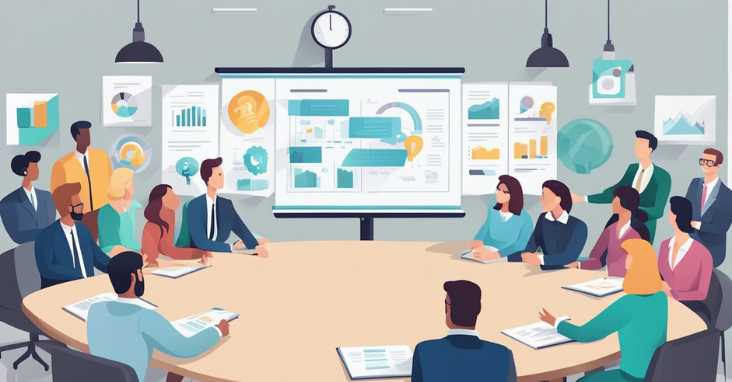
What are the key components of Strategic Human Resource Management?
Strategic Human Resource Management (SHRM) involves aligning HR strategies and practices with the overall business goals and objectives. The key components of SHRM include workforce planning, talent acquisition, performance management, training and development, compensation and benefits, and employee engagement. These components are designed to support the organization’s strategy and ensure that the right people are in the right roles to achieve business success.
How do Strategic HR initiatives align with overall business objectives?
Strategic HR initiatives are designed to support the organization’s overall business objectives by ensuring that HR practices are aligned with the company’s goals. This involves developing HR strategies that support the organization’s mission, vision, and values, as well as identifying the key competencies and skills required for success. By aligning HR practices with overall business objectives, organizations can optimize their workforce and achieve better business outcomes.
What differentiates Strategic HRM from traditional HR practices?
Traditional HR practices are focused on administrative tasks such as payroll, benefits, and compliance. Strategic HRM, on the other hand, takes a more proactive approach to HR management by aligning HR practices with the organization’s overall business strategy. This involves a focus on talent management, workforce planning, and employee engagement, among other things. Strategic HRM is designed to help organizations build a competitive advantage by optimizing their workforce and aligning HR practices with business goals.
Can you provide examples of successful Strategic HRM implementation in organizations?
One example of successful Strategic HRM implementation is Google. The company has a strong focus on talent management, which includes a rigorous hiring process, ongoing training and development, and a focus on employee engagement. By investing in their workforce in this way, Google has been able to attract and retain top talent, which has helped the company to achieve its business goals.
What qualifications are necessary for a career in Strategic HR?
A career in Strategic HR typically requires a degree in HR management or a related field, as well as experience in HR management. In addition, individuals working in Strategic HR should have strong analytical skills, as well as excellent communication and interpersonal skills. A certification in Strategic HR management can also be beneficial.
How does Strategic HR contribute to competitive advantage for organizations?
Strategic HR contributes to competitive advantage for organizations by helping them to optimize their workforce and align HR practices with business goals. By attracting and retaining top talent, developing employee skills and competencies, and fostering a culture of innovation and collaboration, organizations can build a competitive advantage that helps them to achieve better business outcomes.
For more information on Strategic Human Resource Management, visit SHRM.org, a leading resource for HR professionals.



